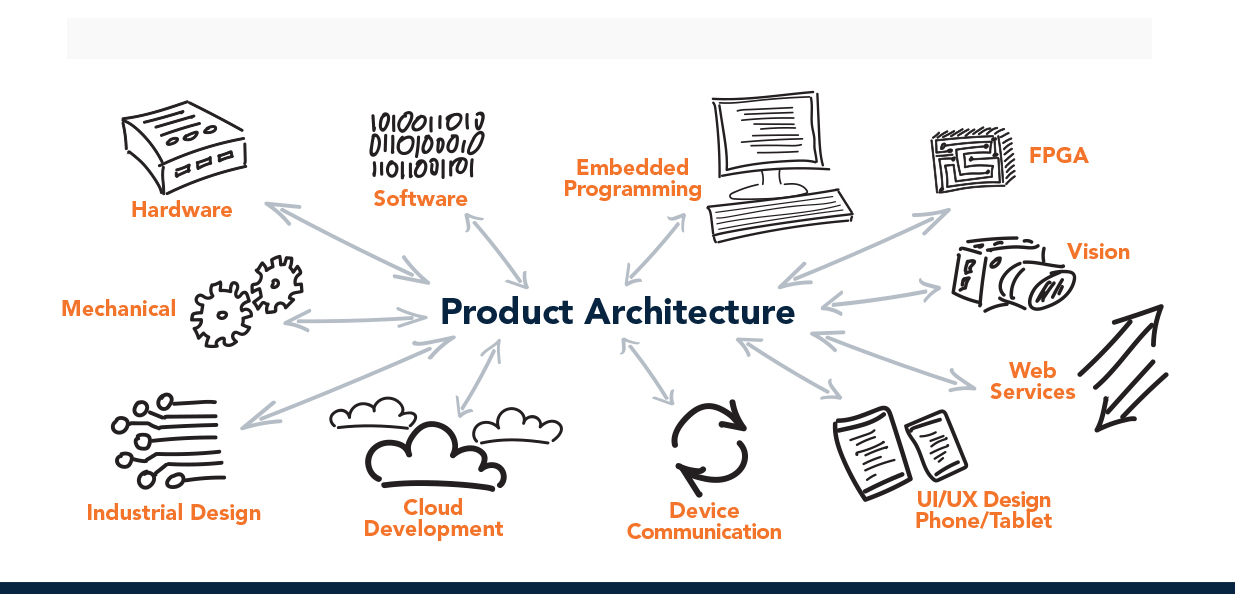Product Design Strategy For IOT Product
In the trend to hit the market with the latest and best technology, it’s inviting to cut corners in the product planning. But spending time to take a strategic key view is to success.
When getting ready for IoT item technique it is anything but difficult to get a touch of inflexible, and spotlight on a solitary gadget. Take a step back to consider the device together with a provident product range could give a decisive competitive advantage in the market.
Two Imperative Pieces:
While IoT products are complex and multi-layered, two imperative pieces — user experience and technology — determine their ultimate success:
User Experience: There are an increasing number of ways to interact with a device, including via Web app or mobile, transparent interactions, and ambient interactions. In the case of learning devices, interactions are initiated by products at convenient times. Interaction designers are anxious with user experience (UX) of the product — the unique consolidation of micro- and macro-interactions.

Technology: IoT moves quickly. Its technology landscape can transform in minimum three months. Because of the essence of consultancy work and short design cycles, we have multiple products in development at all times.
We’ve implemented a deep range of solutions using emerging technology, and we perceive on technology that is still in development. We’re positioned to confidently recommend what’s best for a client’s project from a deep and increasing catalog of options.
Software Scalability is a key concern:
The most expensive part of develope a connected product is in the software. Designing software in a way that makes it easy to restate code in future products is imperative. Therefore software scalability should become a key element in your product planning strategy.
IoT is no longer a vision of the far future – it has arrived and is increasing rapidly. In 2017, the number of connected devices beat the world’s population of 7 billion. It is assuming that to reach 20.4 billion by 2020. This lead the IoT market worth from $157 billion in 2016, to $457 billion over the span of less than 15 years.
Bringing IoT Products to Market: Key Challenges
Logistics Issues: IoT product development teams struggle with system assembly. This occur from the fact that components are often solicit from a wide variety of different sources, and just because of the complex structure of IoT projects which require different components, tools, and frameworks for each stage.

Heavy Costs: The cost of an IoT project can be from thousands to millions of dollars, depending on the scale. There are a lot of moving parts and components that produce the final product, and each needs to be managed strategically.
- Hardware: The costliness of hardware development is a biggest reason why most tech startups you see today are software focused. In additional to the evident design cost of analysis, modeling, prototyping, and testing, another major cost contributor is the hardware certification.
- Software: Your software costs will comprise of application and infrastructure costs. As for application costs, it can depending on the number of supported platforms, unification of third-party solutions, data consumption sources and requirements, as well as security standards.
Third-party Constituent: Developers utilize the use of third-party constituent to provide solutions on which the product development to support current systems or can be built upon. However, in addition to bringing up costs by the need for middleware, it brings up new complexities such as future maintenance to uphold cyber security as well as unpredictability in third-party procured code.
Authenticity and Security: With countless moving parts in the project, it’s not unheard of for forged or non-compliant products to slip through the cracks. In addition to security in the product procurement stage, developers also need to address end-user security. IoT project should be safe from local and remote attackers.
Continuous engineering:
Managing the challenges of IoT product development is possible by continuous engineering. It is a company capability designed to delivery of increasingly sophisticated and connected products by helping businesses to better meet the accelerated pace of change. Continuous engineering can help companies in:
- Improve the customer experience: Maintain customer insight and build relevant products
- Manage complexity: Improve innovation speed and development efficiency
- Embrace connectivity: Wield imperfect information to create larger, interconnected systems
- Collaborate across disciplines: Integrate early to escape last-minute, disruptive integration issues.

Providing full IOT product development support:
The complexity of an IoT product development calls for extensive design, development, testing, production, logistics, and lifecycle management. Each stage holds its own risk of delaying timeline and driving up costs, leading to an overall high cost of failure.- On spec and on time, every time
- Extensive partnerships
- Product authenticity and security
- Lifecycle management
Summary & Conclusions
The IoT is changing consumer behaviour, expectations and leading businesses are responding to its challenges and opportunities. Product evolution in the IoT world is increasing consumer driven, require proactive evolution processes that include feedback loops as often as possible in the design process. The capabilities of continuous engineering for helping developers to manage complexity, to satisfy with regulations, to improve quality and cycle time and to adapt to change are essential for increasing the pace of innovation for the IoT world. For more information be with us, www.epsilonelectronics.in. You can mail us for any question or help on info@epsilonelectronics.in

